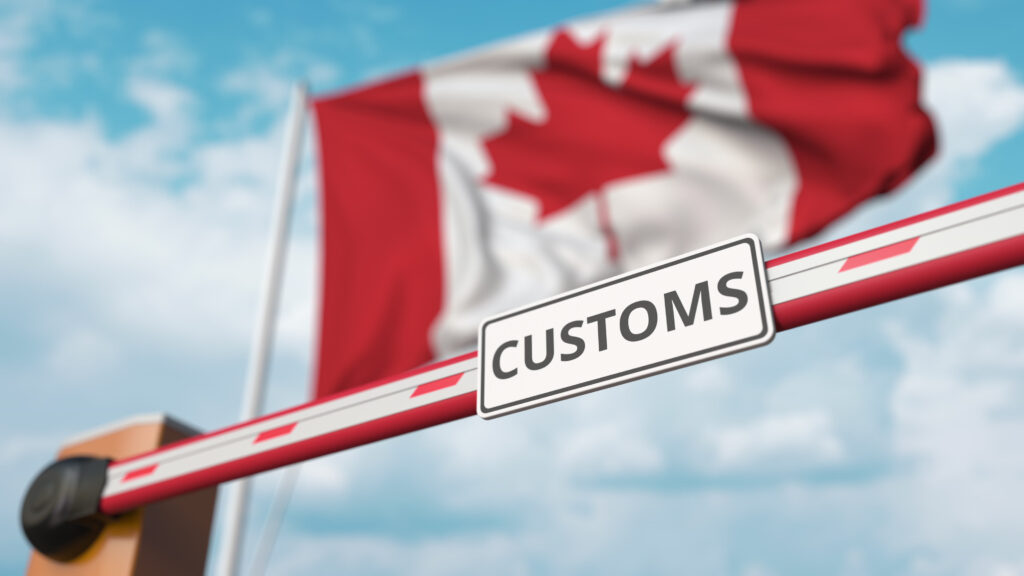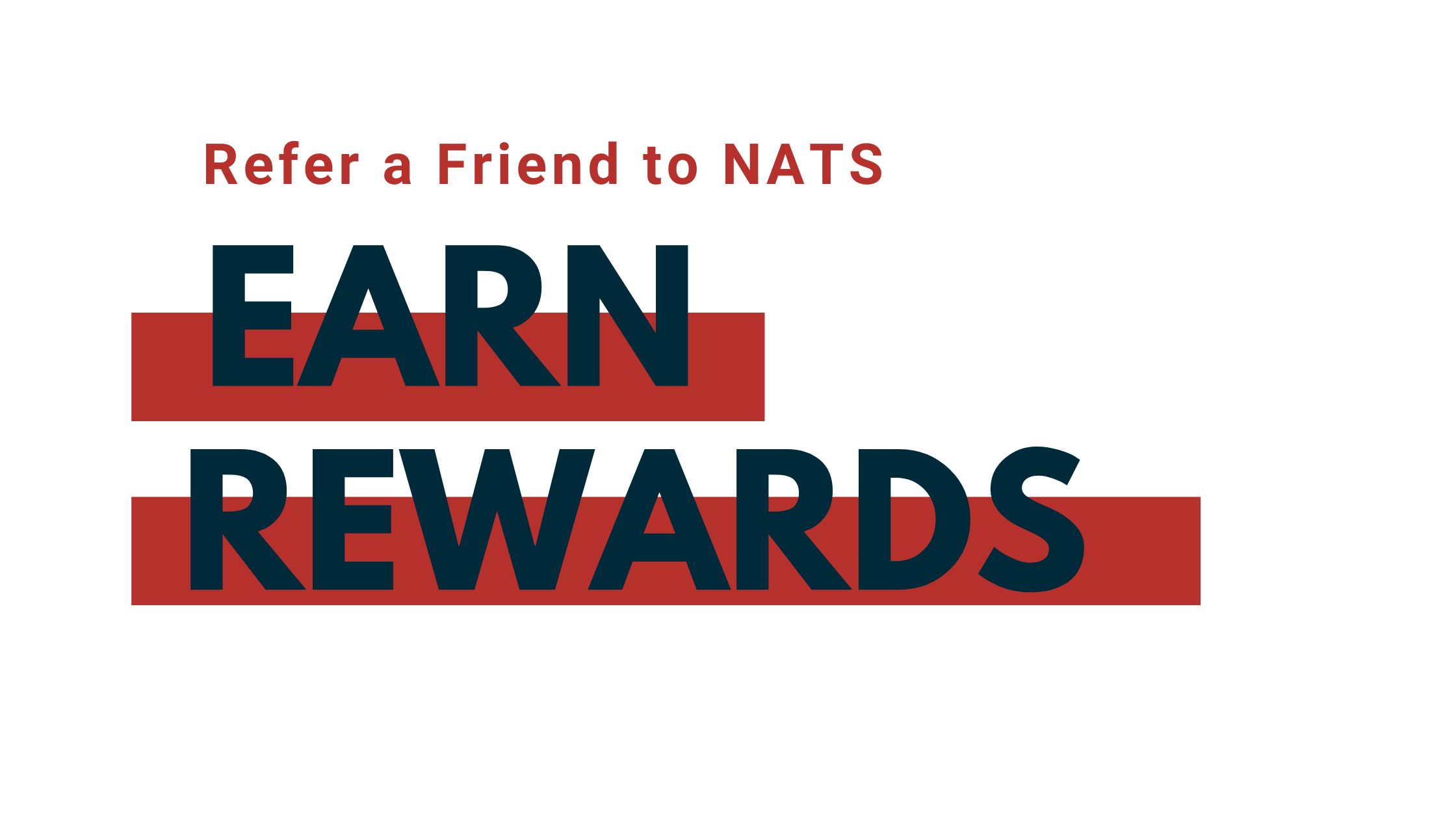Tag: global supply chain and logistics training
Strategies for Mitigating Supply Chain Disruption
July 31, 2024
Whether you want to enter the industry as an aspiring student or are seeking to further your supply chain or logistics career, a firm grasp of global supply chain issues and disruption mitigation best practices is essential. Read on to learn more about supply chain disruption and tips for fostering resilience.
Understanding Supply Chain Disruption
From international military conflict to climate change, many factors can directly or indirectly hinder supply chain operations. In recent years, a series of important global events have led to significant and ongoing global supply chain issues.
The Impact of Global Events on Supply Chains
Many earth-shattering events have contributed to global supply chain disruption and vulnerability over the past five years alone. When the COVID-19 pandemic began to spread across the globe in 2019, it brought with it a lasting supply chain crisis fueled by dramatic spikes in demand for critical products and skyrocketing e-commerce activity, among other factors. Subsequent obstacles to unencumbered trade and shipment include the Russian invasion of Ukraine in 2022 and the significant physical disruptions at both the Panama Canal and the Suez Canal in 2024. The impact of these global events on supply chain operations has proven substantial, enduring, and costly.
Identifying Common Causes of Disruption
Beyond industrial accidents, military conflict, and political unrest, cyberattacks pose a significant threat to global supply chain stability. In addition to these entirely human/societal causes of supply chain disruption, natural disasters such as earthquakes, wildfires, and extreme weather events can make it entirely impossible to transport goods from one location to another.
Building a Resilient Supply Chain
According to the Fortune 500 firm Gartner, supply chain disruptions are now a certainty, being constant and unpredictable. The critical question to address is whether your organization is prepared to mitigate the next global supply chain disruption or other supply chain risks that arise.
Strategies for Risk Assessment and Management
To boost supply chain resiliency, Gartner stresses the importance of three strategic categories: visibility, resilience, and agility. Initiatives that focus on visibility can help supply chain professionals identify risks early and react to them accordingly. Initiatives that focus on resilience aid in the development of supply chain systems that resist, absorb, and recover from disruption. Additionally, initiatives that focus on agility focus on rapid response to supply chain disruption to avoid or minimize its negative impacts.
Importance of Flexibility in Supplier Selection
Stressing agility means ensuring flexibility in your choice of suppliers. Beyond seeking out suppliers that draw from a multitude of sources, companies should be prepared to pivot to others when current supplier performance falls below expectations or needs. To learn more about the importance of supply chain diversification, see the “Diversification as a Key Mitigation Strategy” section below.
Leveraging Technology for Supply Chain Continuity
Over the past several decades, digital technology has completely transformed the supply chain sector, dramatically enhancing capabilities to boost resilience by both assessing and managing risk.
The Role of AI and Machine Learning
The Michigan Manufacturing Technology Center (MMTC) recognizes artificial intelligence (AI) as a revolutionary technology reshaping supply chain management. AI applications in this field include predictive inventory analytics and real-time shipment tracking. According to MMTC, AI has the potential to enhance almost every aspect of the supply chain.
Implementing Blockchain for Transparency
In addition to AI, blockchain technology has provided significant strategic advantages in the global supply chain by enhancing transparency among the various companies involved. According to Deloitte, each business in the supply chain network contributes value to a product or service before it reaches the end user. This value exchange is recorded through transactions involving information, goods, services, and finances. A ‘permissioned blockchain’ can record these transactions on a shared, immutable ledger, enabling data capture, validation, and sharing across interconnected companies. This transparency fosters mutual trust and reduces supply chain risk.
Diversification as a Key Mitigation Approach
Supplier diversification up and down the supply chain can be a beneficial strategy for managing the risk of disruption. Although the heart of this strategy involves relying on multiple suppliers rather than one consolidated source, the types and areas of diversification might differ considerably from industry to industry.
Geographic Diversification of Suppliers
Businesses can make their approach to diversification considerably more strategic by specifically considering geographic advantages and drawbacks. For example, adding supply chain links at the local level might cost more upfront but also generate lasting value through increased inventory control. One popular geographic diversification trend to consider is nearshoring, also known as moving production or supply operations to a nearby country rather than remaining with operations farther away. Nearshoring has proven an effective way to both mitigate disruption and shorten shipping cycle duration.
Product Sourcing and Inventory Diversification
If you want to ensure that your business has the products that it needs on hand, multisource supply chain strategies are key. Even if you secure a single supplier that can reliably source a product from several locations, you may want to maintain relationships with one or more second-tier or auxiliary suppliers to work around unforeseen supply chain disruptions that might arise. To maximize your multi-sourcing efforts, you would be wise to investigate inventory diversification opportunities, including using other products or raw materials if they are easier to access and transport.
Strengthening Supplier Relationships
While it is generally a good idea to acquire new suppliers to diversify your supply chain, it is equally advantageous to foster reliable, long-term relationships with your existing suppliers. An organization can save a tremendous amount of hassle and money by establishing and maintaining mutually beneficial partnerships with suppliers that they can trust to deliver high-quality goods on schedule.
Collaboration for Improved Supply Chain Visibility
Supply chain expert Efrata Denny emphasizes the importance of collaboration in supplier relationships, ranking it as the top reason to maintain strong ties with key suppliers. He explains that when suppliers are regarded as partners, the resulting collaboration creates a powerful synergy that drives organizational success.
Establishing Strong Communication Channels
Denny highlights that successful collaboration relies heavily on clear and open communication. He stresses that communication must be ongoing throughout the supply chain, not just during the contract negotiation phase. Regular updates, meetings, and feedback sessions are essential for maintaining alignment, making timely adjustments, and swiftly resolving any issues that occur.
Preparing for the Future of Supply Chains
The only true constant in supply chain management is change. Therefore, savvy supply chain professionals must plan for the industry’s immediate and distant future.
Trends Shaping the Future of Supply Chain Management
As detailed previously, innumerable natural and human-made issues can profoundly influence supply chain operations. Looking to the future, Gartner has identified trends in the following areas shaping the future of supply chain management for both the better and the worse, including trade policy, labor, energy, global health, sociopolitical unrest, and ESG (environmental, social, and governance).
Adapting to Changes in Consumer Demand and Regulation
In an issue brief on supply chain resilience, the White House listed industry transparency and public sector intervention as the two key factors driving global supply chain resilience. Both of these factors involve responding to rapid changes in consumer demand and adhering to evolving industry regulations. Among other things, this means improving access to relevant supply chain data and diversifying supplier sourcing in the many ways outlined in the “Diversification as a Key Mitigation Approach” section above.
Frequently Asked Questions
Anyone with a significant interest in supply chain management is likely to ponder one or more of the following FAQs about responding to global supply chain issues and risk mitigation.
As previously discussed, AI and machine learning are handy tools when it comes to predicting future disruptions in the supply chain. Whether aided by AI or driven by human calculations, statistical analysis models such as the MAPA (Multiple Aggregation Prediction Algorithm) and the ARIMA (Autoregressive Integrated Moving Average).
The supply chain technology consultancy Accenture recommends attending to upstream tier-1 and tier-2 suppliers first and foremost in times of disruption, rethinking short-term sourcing options within current supply network constraints. Then, they can begin to establish a stable supply base by freeing up funds to double down on the most reliable supply chain routes. Throughout the immediate response to any supply chain disruption, Accenture stresses the importance of putting people first. A people-first initiative means that companies should center their risk management efforts around developing improved relationships with partners throughout the supplier and consumer ecosystem.
Beyond AI and blockchain, technology is driving the evolution of supply chain risk mitigation in countless ways. By placing sensors on shipped goods and using intelligent equipment capable of communicating real-time data, the IoT (Internet of Things) can track movement across every link in the supply chain. GPS technology also plays a vital role in modern shipment tracking.
Other forms of digital tech shaping the future of responsible and responsive supply chain management include SCM (Supply Chain Management) and ERP (Enterprise Resource Planning) software to plan and oversee comprehensive logistics operations. Automated robots can boost efficiency and prevent errors in the warehouse, while airborne drones can serve as ideal vehicles for swift and reliable consumer deliveries.
Improve Your Global Supply Chain Strategy
You need a professional command of global supply chain strategy if you want to deliver optimal supply chain resilience. For this reason, among others, a supply chain/logistics industry-focused diploma is quite important. To learn more about what a practical education in the global supply chain can do for you, examine the Global Supply Chain & Logistics Management Diploma at North American Trade Schools (NATS) and enter your contact information in the “Connect with NATS” section for additional details.
Streamlining Customs and Border Clearance Processes in Canada
April 29, 2024
In today’s hyperconnected and e-commerce-driven world, international consumer and business transactions are more common than ever. Global commerce and trade can undoubtedly be quite lucrative, but it can also be complex and time-consuming to navigate. Chief among such obstacles that international importers and exporters must endure are border and customs clearance processes.
Fortunately, organizations in Canada and elsewhere can significantly simplify and streamline customs and border clearance processes by approaching them with thorough preparation and strategic logic. Read on for some key guidelines for making Canadian customs clearance more straightforward and more efficient.
What Is Customs Clearance?
Briefly defined, customs clearance refers to the procedures one must follow and processes one must complete to import or export items and goods across international borders legally. Conducted under the authority of sanctioned government officers, it might involve anything from providing invoices and proof of insurance to passing pre-shipment inspection and other examinations.
Key Components of the Canadian Customs Clearance Process
For companies and individuals alike, the first step to importing or exporting goods over Canadian borders is to obtain a business number (BN) for an import/export account through the Canada Revenue Agency (CRA). There are no charges associated with securing a BN, and the entire application process takes just a few minutes.
To get a new BN or add an import/export account identifier to a current BN, call the CRA at 1-800-959-5525 or see the CRA Business Registration Online section of the official Government of Canada website. When you are appropriately registered with the federal government, you can then begin considering the following key components of the Canadian customs clearance process.
Documentation Requirements
The documentation required to import goods into Canada is substantially more extensive than the documentation required to export goods out of it. Importers must begin by identifying the specific type and amount of goods they want to bring into the country, gathering as much information about them as possible. “Obtain descriptive literature, product composition information and, whenever possible, product samples,” stresses the Canada Border Services Agency (CBSA). “This information will be crucial when it comes time to determine the tariff classification of the goods you wish to import.”
Tariffs are government fees imposed on imported items from various countries. Different items not only come with different tariffs but also require different documentation. While you should check with CBSA officials to ensure you have all the necessary documents to complete your intended import processes, the brokerage and trade consultancy Livingston identifies four documents that must accompany every shipment coming into Canada:
- Canada Customs Invoice (CCI), or commercial invoice – Primarily used to calculate tariffs, the Canada Customs Invoice identifies both the buyer and seller, the countries of origin and destination, and detailed information about the goods being shipped.
- Bill of lading (BOL) – Commonly known by the acronym BOL, this document is issued to the shipper of goods from the carrier of goods. BOLs allow importers to obtain merchandise and exporters to receive payment. Shipment tracking numbers are key elements of these documents.
- Manifest or cargo control document (CCD) – Cargo control documents CCDs (otherwise known as manifests) go beyond cargo content details and names of importers/exporters to include information such as the type of shipment transportation as well as the captains, pilots, crew, and passengers that this transportation carries.
- Shipper’s Export Declaration (SED): This document records every individual import shipment to its final domestic destination. One of its primary purposes is compiling international trade statistics.
Although exports leaving Canada typically require fewer and less stringent government barriers, many goods that are (in the words of the CBSA) “controlled, regulated or prohibited may require export permits, certificates or licenses from other government departments and agencies.” These goods range from bodies or body parts and human pathogens to explosives that include both fireworks and ammunition. For a complete list of these restricted exports, see the “Goods That May Require Export Permits” section of the CBSA website.
Tariffs, Duties, and Taxes
Beyond the tariffs discussed above, the CBSA may also levy duties that vary according to the type of goods imported and their country of origin. For example, the organization applies an excise duty on certain imported luxury items. CBSA duty calculations also reflect the overall value of the goods in Canadian funds.
The Canadian government levies a standard 5% Goods and Services Tax (GST) on all imported items, including those sent through the mail. However, goods sent by mail worth $20 (in Canadian dollars) or less are exempt from this tax. Gifts from friends or family members abroad can be worth as much as $60 before the GST applies. Individuals and organizations can also register for specific GST credits and rebates.
Though the definitions of tariffs, duties, and taxes tend to overlap and blur together, they also have their distinct attributes. Tariffs apply to specific products from certain countries at particular times, duties are primarily based on cargo characteristics, and taxes are generally fixed and calculated on total cargo value.
Customs Procedures and Compliance in Canada
Eager to move through all necessary import and export customs procedures in full compliance with Canadian law? The CBSA presents the importation of goods into Canada as a comprehensive six-step process:
- Preparing to import by compiling all necessary shipper, receiver, cargo, and transportation information
- Classifying your goods according to relevant government regulations
- Determining all applicable tariffs, duties, and taxes
- Physically shipping and officially reporting your goods
- Seeking the official release of your goods
- Taking key steps after your goods are released
Your primary imperative after the release of your goods will be to double-check your import/export records to immediately report any errors in the accounting information you have submitted to the Canadian government. Then, you should safely and securely store all documents pertaining to your import for at least six years. During this period, your import may be subject to verification and adjustment by the CBSA.
Leveraging Technology for Streamlined Clearance
Although the import and export customs process can be complicated, modern technology has made it much simpler by automating routine tasks, reducing manual paperwork, enhancing supply chain security, and providing real-time shipment tracking and transparency. Industry experts recommend the following forms of technology for import/export professionals who can benefit from them:
- Electronic Data Interchange (EDI) and Automated Broker Interface (ABI) – Facilitates data transmission between customs brokers and relevant government agencies.
- Automated Commercial Environment (ACE) – Facilitates the reporting of imports and exports between Canada and the United States.
- Automated Customs Declarations Processing (ACDP) – Facilitates cargo valuation, origin declaration, tariff classification, and duty calculation.
Global Supply Chain Management and Customs in Canada
If you are an existing or aspiring supply chain manager who deals with international shipments, you should keep a few “big picture” factors in mind when approaching the role of import/export customs in your chosen profession.
The Role of Logistics Management
The pace, cost, and dependability of the customs clearance process will impact the pace, cost, and reliability of your international supply chain. Faster and more efficient customs clearance will give you a distinct competitive advantage as a supply chain manager.
Coordinating With Canadian Suppliers and Distributors
Choosing your partners wisely is a big part of supply chain success. Consider working with Canadian suppliers and distributors that thoroughly understand domestic customs procedures and processes.
Compliance With Canadian and International Regulations
Planning and preparation are essential to facilitate full regulatory compliance. Carefully research all pertinent regulations and requirements for Canada and any other country involved in your import and export operations. Be sure to obtain and complete all necessary documents in a timely manner.
Strategies for Effective Customs Clearance in Canada
Whether you are a supply chain professional, an importer/exporter, or another interested party, you can optimize your customs clearance knowledge and skill by:
Staying Informed
The logistics and transportation news source Inbound Logistics acknowledges the complexity of the customs clearance process but insists that it can be a smooth experience if you know what you are doing: “Because regulations and best practices are constantly changing, staying current on the latest developments in the customs world is an absolute must.”
Following Accurate Documentation Practices for Canadian Imports
After ensuring you are up to date on all current information and practices, you must use this information to fill out all required forms precisely, accurately, and completely well in advance of your scheduled import/export shipment date.
Practicing Proactive Compliance Management in the Canadian Market
It is crucial to anticipate bumps in the road—such as multiple customs clearance checks and unexpected tariffs, duties, and taxes. In addition to following best practices, taking thorough stock of the goods you are shipping can help you navigate the process.
Earning a Global Supply Chain Management Diploma
In Canada and elsewhere, you need a strong command of import and export customs clearance fundamentals if you wish to thrive as a supply chain manager or another international business professional. You can gain the many tools that lead to success through a high-quality global supply chain management program like the Global Supply Chain & Logistics Management diploma at North American Trade Schools (NATS). For more information, complete our short “Connect With NATS” form online today.
4 Important Skills To Have If You’re Considering Global Supply Chain And Logistics Training
April 29, 2024A global supply chain manager is responsible for the worldwide product flow management of an organization. During global supply chain and logistics training, you will learn a wide variety of skills to prepare you for the role.
During your logistics management diploma, the skills you will learn include data analytics, contracting, operations management, quality management, customs and global trade compliance, warehousing, communications, and supply management.
You also have the opportunity to sit the Canadian International Freight Forwarders Association certification exam and the Lean Six Sigma Yellow Belt certification exam. Your training will thoroughly prepare you to succeed in a global supply chain and logistics role, however, to do this, you also need good foundational skills.
Discover the essential skills needed for global supply chain and logistics training. Check out this infographic!
[Infographic] 4 Important Skills To Have If You’re Considering Global Supply Chain And Logistics Training
1. High Attention to Detail
Being detail-oriented is important:
- Every aspect of the logistic process is crucial and plays an important role.
- You’ll need to focus on the details to ensure success throughout the supply chain.
- High attention to detail often results in consistently improved systems and processes.
- Being attentive helps avoid mistakes.
Indicators you have high attention to detail include:
- Double-checking your work.
- Being a person who manages their time well.
Strong attention to detail enables thorough evaluation of operations, minimizing errors in the workplace
2. Strong Interpersonal Skills
Managing and communicating effectively is important:
- In a management role, your ability to communicate effectively is important.
- Effective communication and robust interpersonal skills are essential for interacting and negotiating with business partners.
- Be customer-oriented to ensure client satisfaction and continued business.
- Strong listening and effective communication skills, will help you thrive in a global supply chain management role.
Indicators that you have strong interpersonal skills include:
- You can collaborate with others whenever needed.
- You can communicate your ideas in an easy-to-understand manner.
You need to be able to communicate effectively with team members and customers to succeed in the role.
3. Adaptable in all Situations
Situations change and being adaptable is important:
- Successfully managing and solving logistics challenges is key to excelling in your role.
- You must think quickly, analyze situations, and devise solutions under pressure.
- Adaptability in learning new systems and processes is crucial as they evolve.
Indicators that you have effective adaptation skills include:
- You work well under pressure.
- You enjoy problem solving.
- You commit fully when mastering new skills.
In changing situations, swift and clear adaptation and decision-making are essential.
4. Know Technology
Being technologically savvy is important:
- Supply chains are complicated and require software and programs to remain up-to-date.
- The software and programs streamline tasks and information.
- Knowledge of computer systems is crucial.
- In larger companies, technological processes become more complex due to the increased volume of information to manage and update.
Indicators showing you have strong technical skills include:
- You know how to navigate a computer system well, including Microsoft Suite.
- You can efficiently utilize programs, quickly mastering their features to accomplish tasks.
Understanding and working with technology is fundamental to a global supply chain and logistics role.
Sources:
https://www.indeed.com/career-advice/career-development/logistics-career-skills
https://www.logisticsbureau.com/7-key-supply-chain-leaders-skills-and-why-you-need-them/
https://www.techtarget.com/searcherp/feature/5-skills-supply-chain-professionals-need






